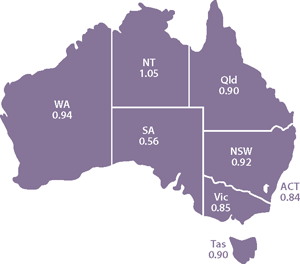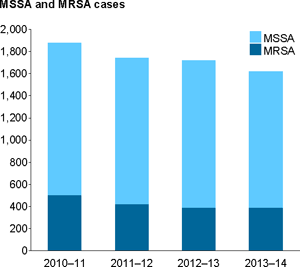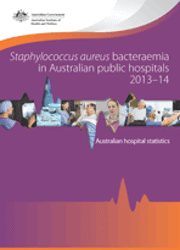Summary
Staphylococcus aureus bacteraemia (SAB) in Australian public hospitals 2013-14
SAB is a serious bloodstream infection that may be associated with hospital care. Hospitals aim to have as few cases as possible.
The nationally agreed benchmark is no more than 2.0 SAB cases per 10,000 days of patient care for acute care public hospitals in each state and territory.

In 2013-14:
- the national rate of SAB in public hospitals was 0.87 cases per 10,000 days of patient care
- rates differed among the states and territories, but all jurisdictions had rates below the national benchmark
- 1,621 cases of SAB were reported
- 3 in 4 cases were treatable with commonly used antibiotics
-methicillin-sensitive Staphylococcus aureus (MSSA) cases - 1 in 4 cases was antibiotic resistant- methicillin-resistant Staphylococcus aureus (MRSA) cases.
Between 2010-11 and 2013-14, rates of SAB decreased from 1.10 cases to 0.87 cases per 10,000 days of patient care.

The overall number of SAB cases decreased from 1,876 in 2010-11 to 1,621 cases in 2013-14. The number of MRSA cases decreased from 505 to 389 cases.




